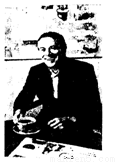题目内容
When I was a child in 1970s, my 1. was very poor, just like other average families in the countryside. The second-hand clothes and rain leaking roof of old house became part of my memory. However, the worst 2. (impress) is that I was feeling hungry all the time. Sometimes hunger bit me so severely 3. I regarded dried sweet potato slices as delicious snack. At that time, my dream was getting enough to fill my empty stomach.
In the early years of 1980s, as the reform and opening-up policy4.(carry) out, the children dream came true. And then,5.dream became clear and clear in my mind---I must try my best to escape out of my poor and backward hometown. I worked 6.(hard) at my study than most of my classmates, and , after luckily 7.(succeed) in the national college entrance examination, I realized my dream again: after graduation, I became a citizen working in a city. 8. the first college graduate out of a remote village, my success set an example for my folks. 9. came to realize that schooling is a good way to change one’s fate. In the following years, there were fewer dropouts and more college graduates in my village, of 10. I am proud even today.
 阅读快车系列答案
阅读快车系列答案假如你是校报英文版编辑,要发一篇关于“东莞市首届英文歌大赛”报名通知,内容包括:

报名时间 | 3月10日――5月10日 |
参赛人员 | 在东莞工作、生活、学习的英语爱好者、外籍人士等; |
上传材料 | 30秒的个人介绍 |
活动意义 | 提高英语学习兴趣、结识新朋友 |
参考词汇:报名sign up 上传upload
注意:1. 词数100左右;
2.可以适当增加细节,以使行文连贯;
3. 开头和结尾已给出,但不计入总词数;
4.文中不能出现真实校名或姓名。
[评分评准]
句子结构准确,信息内容完整,篇章结构连贯。
Notice
Hello, everybody!
The 1st Dongguan English Singing Talent Show is going to be held. __________________________________
____________________________________________________________________________________________
____________________________________________________________________________________________
____________________________________________________________________________________________
____________________________________________________________________________________________
____________________________________________________________________________________________
________________________________________________________________________
Thank you
Editor Li


